Former tobacco factory sets Athens' radical art scene alight
Ambitious group show ‘Portals’ transforms Athens’ historic Public Tobacco Factory into a platform for international contemporary art, including new work by Glenn Ligon, Teresa Margolles and Danh Vō
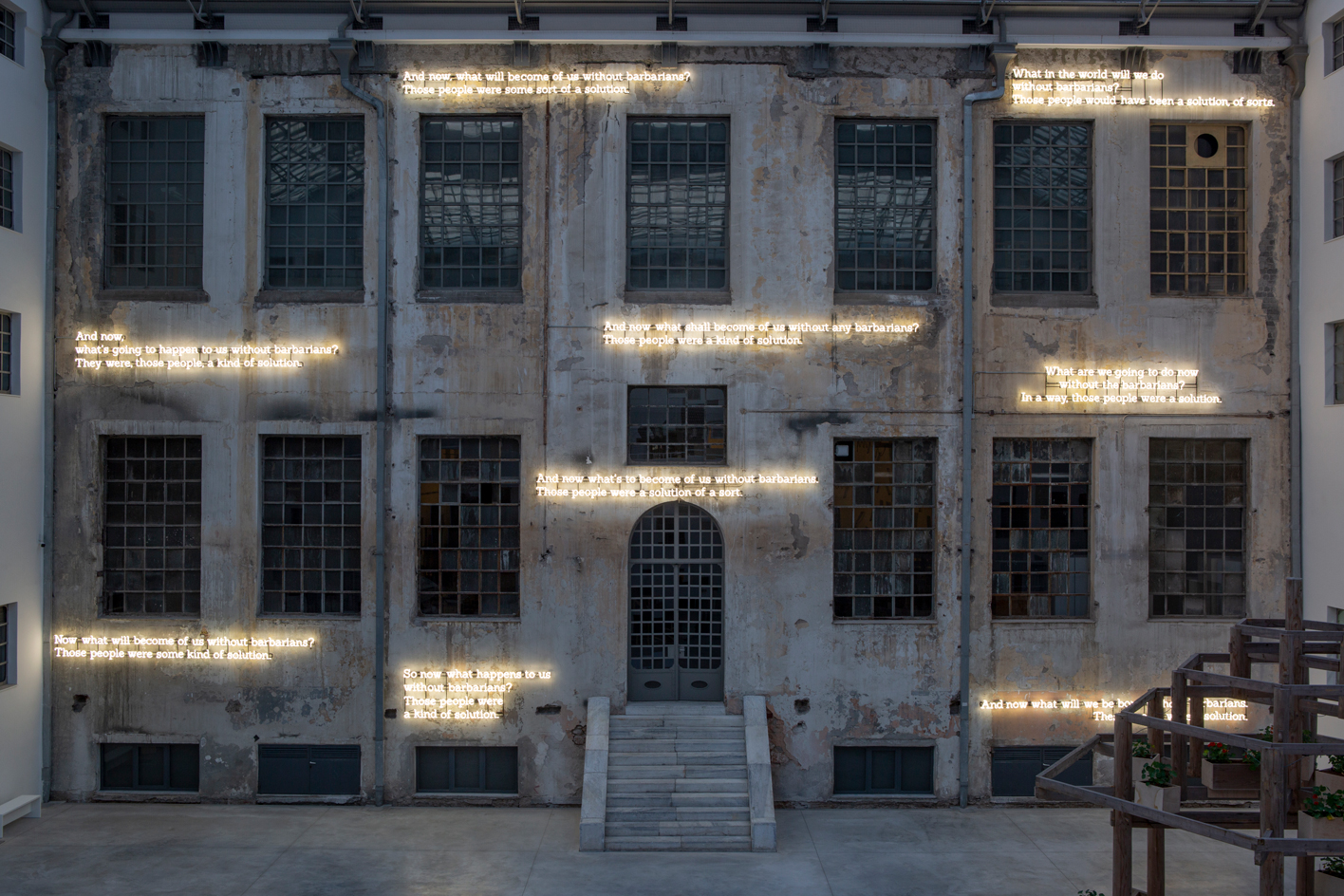
It’s often the buildings with the most curious past lives that make for the most striking stages. In Athens, a colossal new group show, ‘Portals’, has a backdrop almost as intriguing as the art it frames.
‘Portals’ takes place in the city’s former Public Tobacco Factory, constructed in 1930 to cultivate a crop that served as one of Greece’s most important exports. ‘The former Public Tobacco Factory building is an iconic structure in the city centre, a symbol of the country’s path to industrialisation and, at the same time, a footprint of its architectural heritage,’ says Elina Kountouri, exhibition co-curator and director of Neon, the non-profit arts organisation who co-organised the show and renovated the historic building.
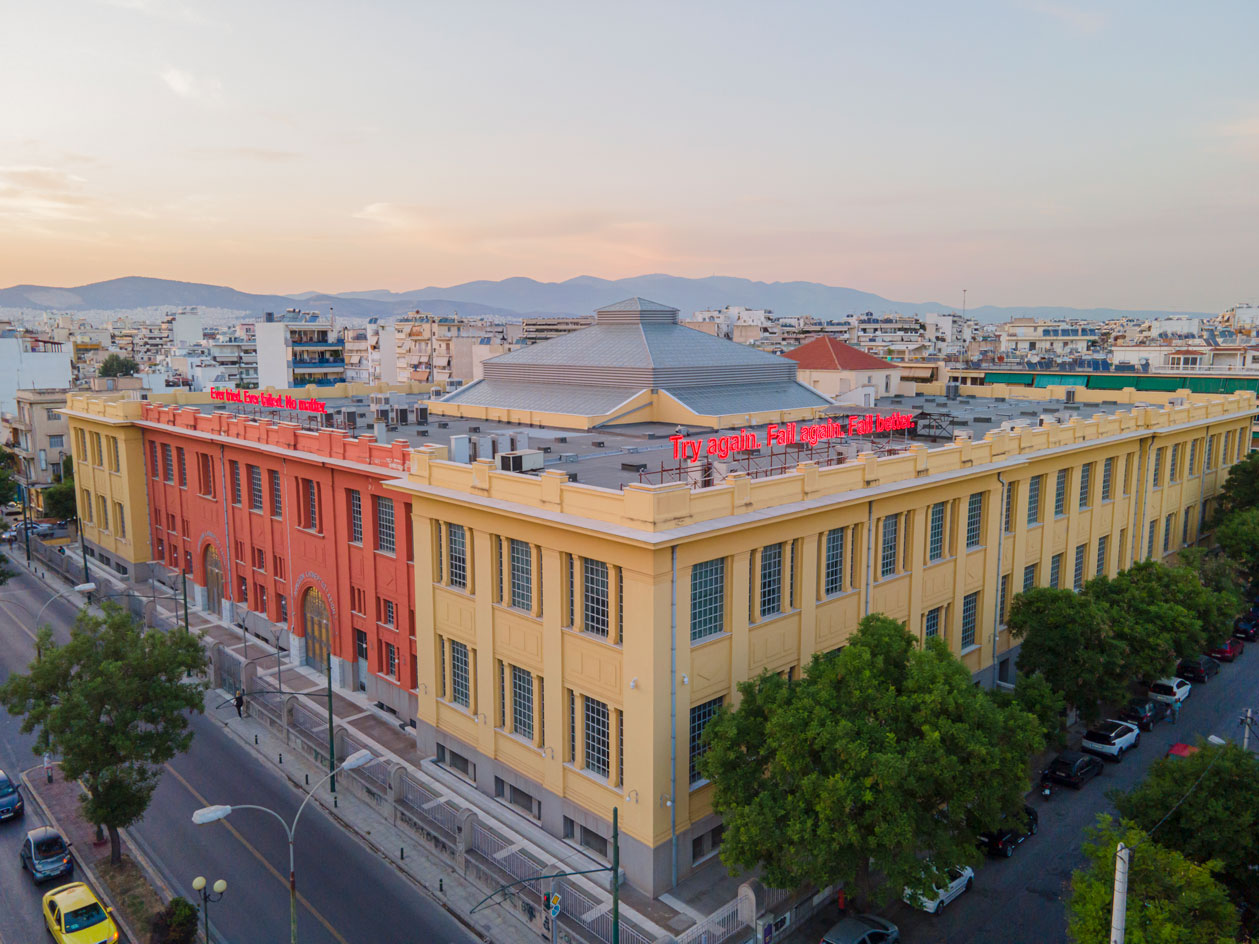
Nikos Navridis, Try again. Fail again. Fail better, 2013, galvanised sheet metal, oven paint, LED light, Edition 2021, courtesy the artist, NEON and Bernier/Eliades Gallery. Installation View 'Portals', Hellenic Parliament + NEON at the former Public Tobacco Factory, courtesy NEON
Though the story begins with tobacco and ends with world-class contemporary art, the shapeshifting building has demonstrated versatility over its near-century history. It’s done time as a prison, been a Second World War air-raid shelter, housed Romanian refugees, been home to the Greek Cabinet Office, the Ministry of Finance, and its present occupant, the Hellenic Parliament, with which Neon collaborated for ‘Portals’.
This rich history is in tune with the theme of the show. This year marks 200 years since the start of Greece’s War of Independence from the Ottoman Empire and the birth of the modern Greek nation. In 'Portals', parallels are drawn between this seminal moment in Greece’s history, and the Covid-19 pandemic that continues to shake the world.
‘Two hundred years ago, the Greeks had to design their future as an independent state and uphold the values of rule of law and personal liberties. Today, humanity is being forced to reshape everyday reality and to reassess its understanding of what freedom means. Once again, we are asked to reimagine lives reborn out of revolution and upheaval,’ says Kountouri, who co-curated ‘Portals’ with Madeleine Grynsztejn, Pritzker director, Museum of Contemporary Art Chicago.

(Front to back) Do Ho Suh, 348 West 22nd St., Apt. A & Corridor, New York, NY 10011, 2000-1, translucent nylon, D.Daskalopoulos Collection; Apostolos Georgiou, Untitled, 2020, diptych, acrylic on canvas. Courtesy the artist and Rodeo, London / Piraeus. Installation View Portals, Hellenic Parliament + NEON at the former Public Tobacco Factory, courtesy NEON
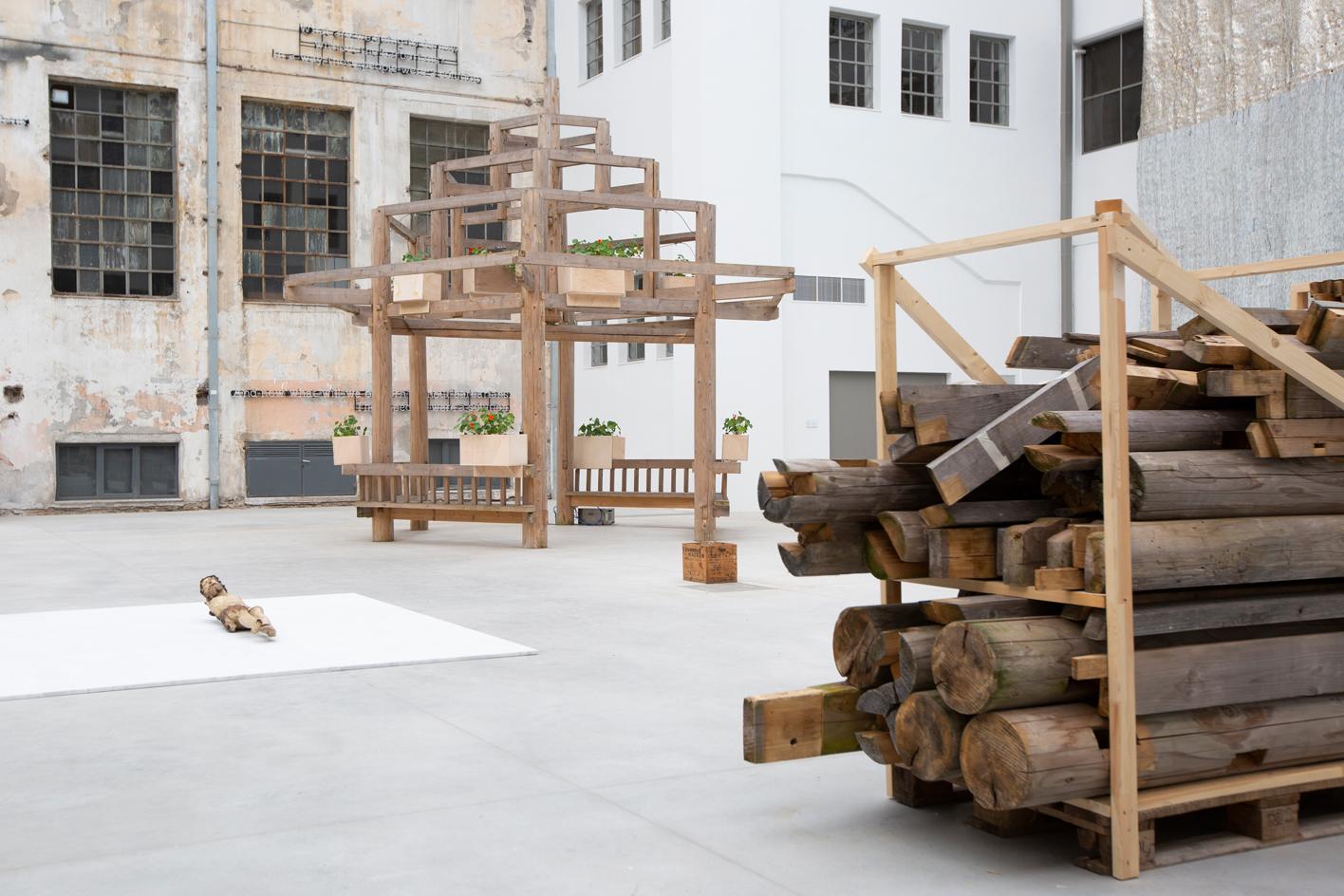
Danh Võ, Untitled, 2021 (detail), mixed media. Courtesy the artist. Commissioned by NEON. Installation View ‘Portals’, Hellenic Parliament + NEON at the former Public Tobacco Factory, courtesy NEON
Neon, founded in 2013 by collector and entrepreneur Dimitris Daskalopoulos, sees its platform as the city. By focusing on initiatives in civic and social contexts, it identifies the power of contemporary art to inspire individuals and society. Hosted in the building’s west wing, the group show features 59 artists from 27 countries with 15 site-specific, newly commissioned works. Among the artist’s presenting new commissions are Glenn Ligon, Duro Olowu, Teresa Margolles, Michael Rakowitz, Danh Vō and Chrysanthi Koumianaki.
Ligon’s Waiting for the Barbarians, a white neon work in direct conversation with the building’s architecture, takes its title and inspiration from a work by Greek poet CP Cavafy. It presents nine English translations of the poem, one of which was generated through Google Translate. ‘CP Cavafy was one of the first modern Greek poets I was introduced to in high school and I always admired the subtlety of his language and the directness with which he approaches themes of same-sex desire,’ the American artist tells Wallpaper*. ‘Since I don't read Greek, I have always relied on translations, but since there are dozens of translations of Cavafy into English I realised that it might be interesting to present them simultaneously instead of picking the “best” translation of a particular poem. The poem is over a hundred years old but its themes of cultural dissolution, fear of the other, and political expediency resonate strongly today.’
RELATED STORY
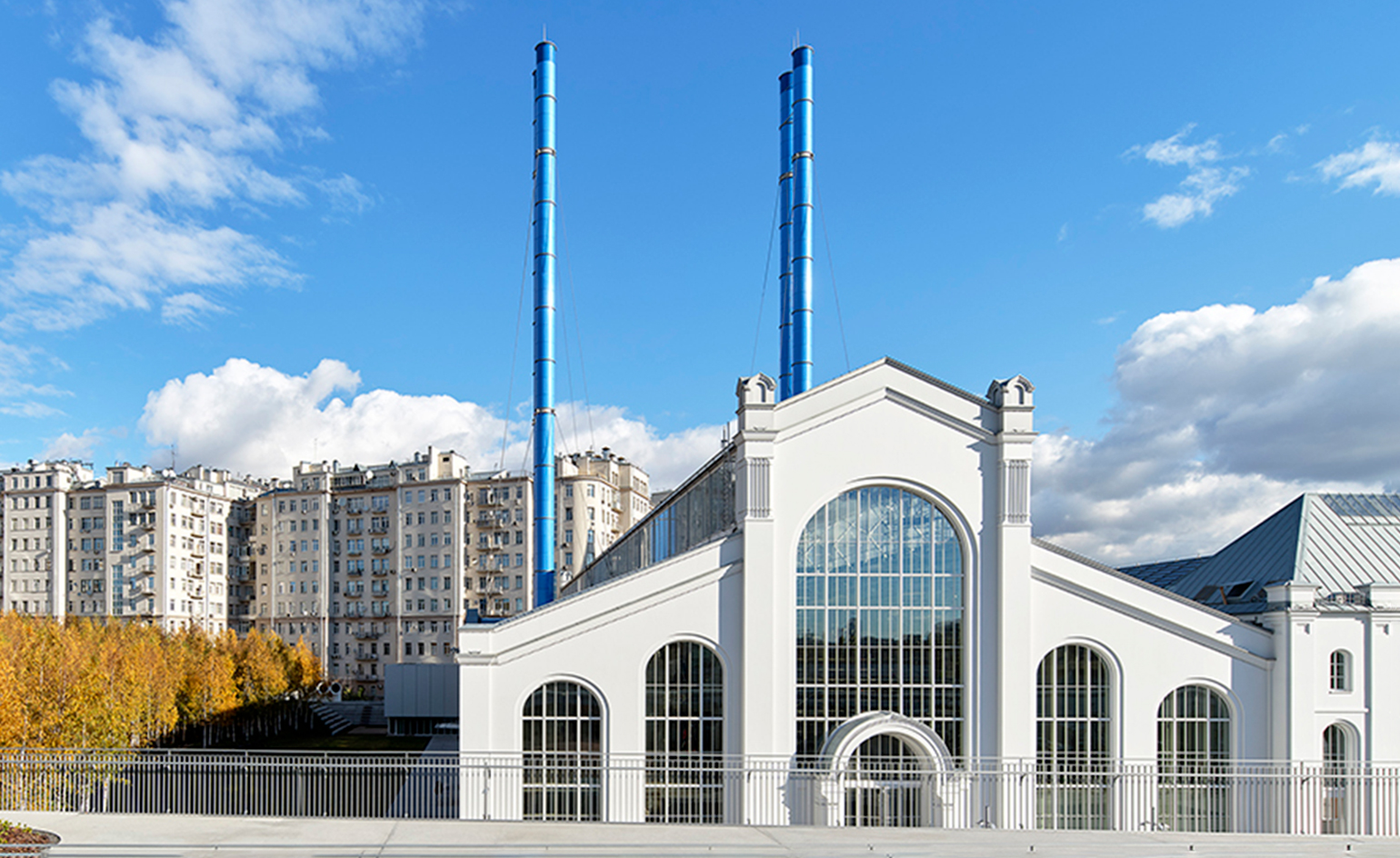
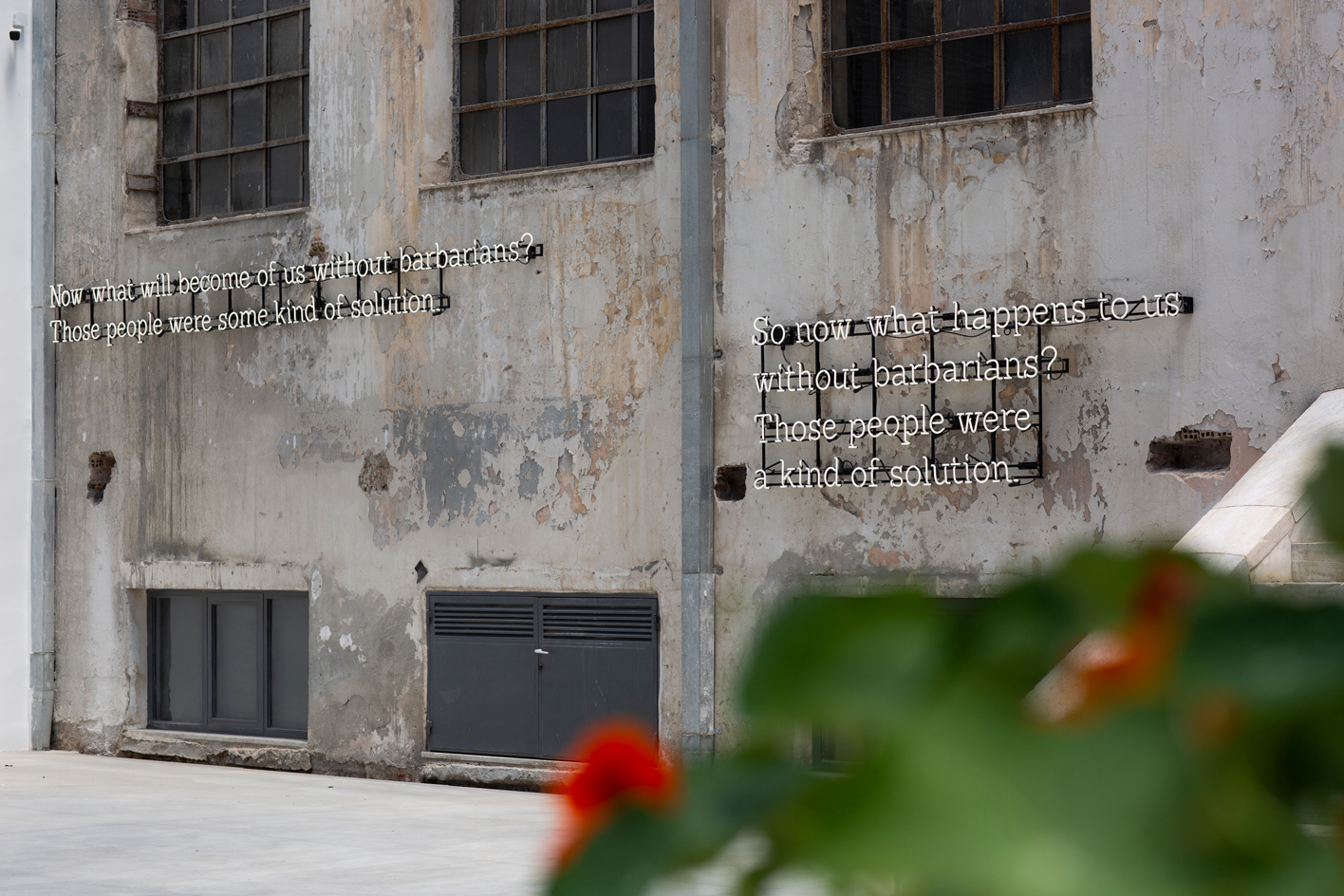
Glenn Ligon, Waiting for the Barbarians, (detail), 2021, Neon. Courtesy the artist and Thomas Dane Gallery. Commissioned by NEON. Installation View 'Portals', Hellenic Parliament + NEON at the former Public Tobacco Factory, courtesy NEON
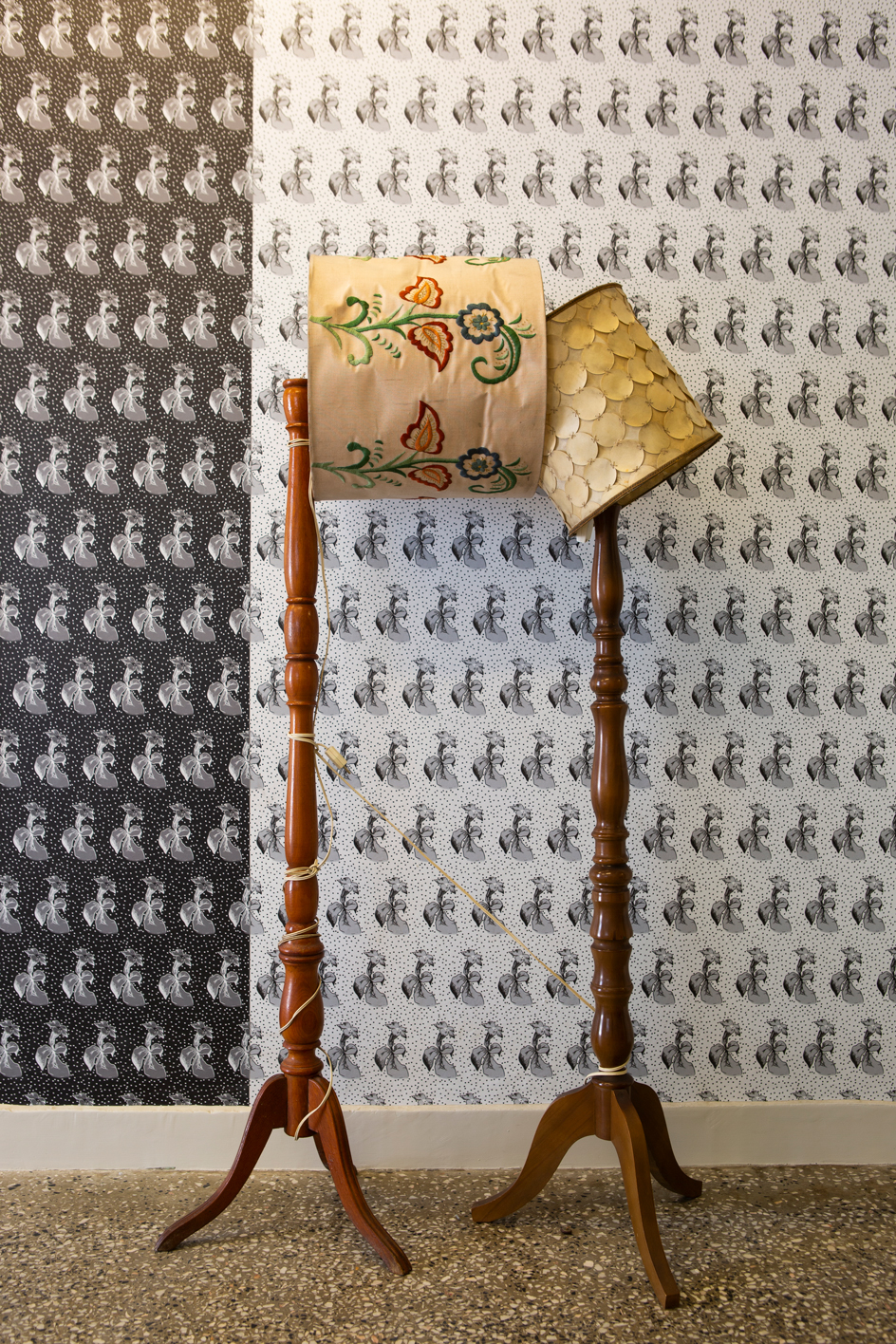
Duro Olowu, Bound, Lost, Found, Heaven sent: A Trail of Objects, 2021 (detail), courtesy the artist. Commissioned by NEON. Installation View Portals, Hellenic Parliament + NEON at the former Public Tobacco Factory, courtesy NEON
Olowu’s new work Bound, Lost, Found, Heaven sent: A Trail of Objects, staged within the factory’s former customs house, comprises textural sculptures, rendered in ash, oak and sapele and cedar wood, synthetic and natural fabrics, alongside those using found antique objects.
Through his multifaceted work, Olowu hopes to ‘subliminally create an environment that examines various historical and contemporary ideas of migration, beauty and "found" truths. Such as ancient and modern connections between Ethiopia and Greece as expounded by Homer in his poems “Odyssey” and “The Iliad”. In these poems, Ethiopia was referred to as Aethiopia, which translates to ‘burnt face’. The connotations of which reveal hidden and pervasive undertones in politics and art.’
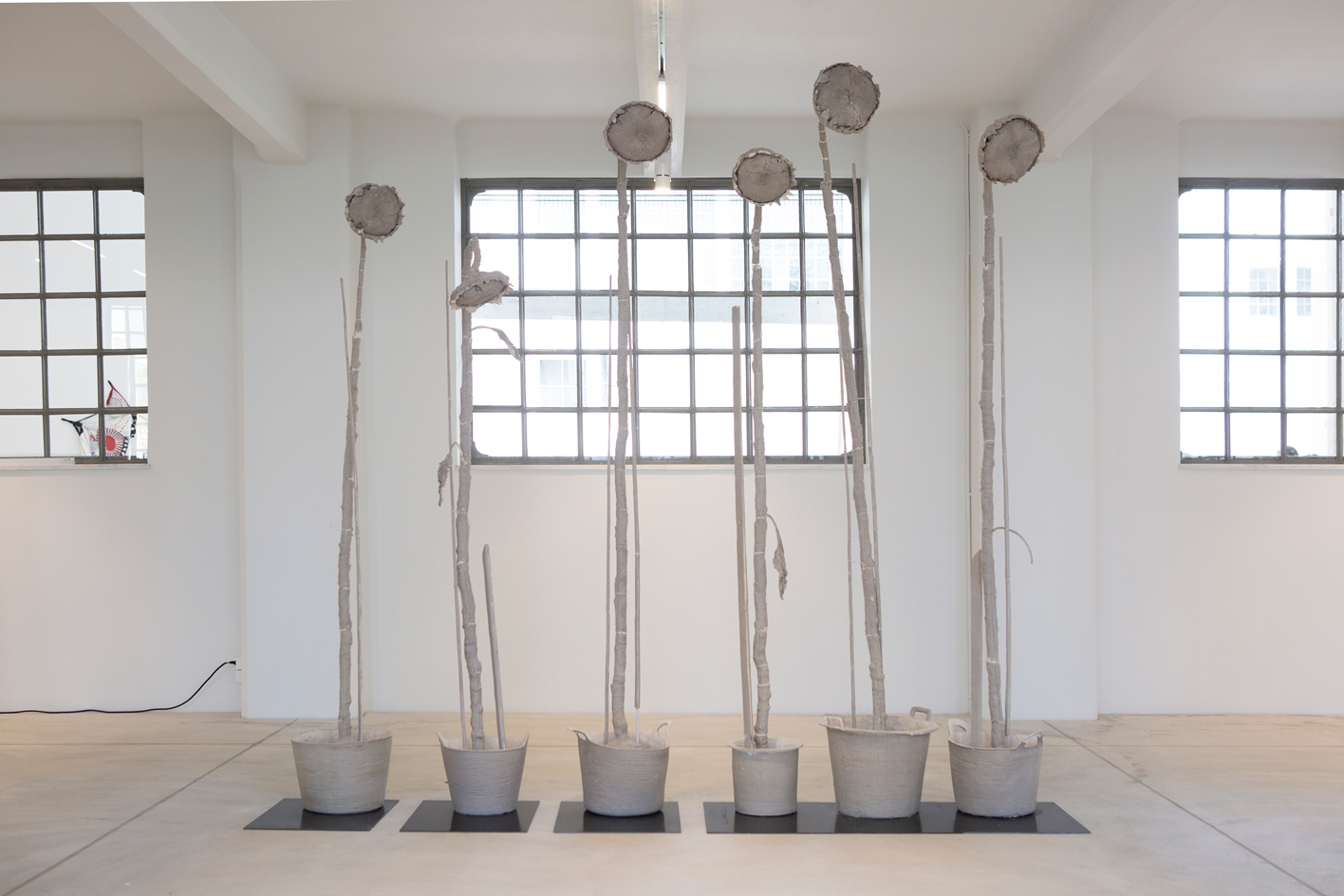
Daphne Wright, Maple Row Sunflowers, 2019, mixed media, courtesy the artist and Frith Street Gallery, London. Installation View Portals, Hellenic Parliament + NEON at the former Public Tobacco Factory, courtesy NEON
Other artists are presenting existing works in a new context. These include pieces by Daphne Wright, Do Ho Suh, Shilpa Gupta, Adam Pendleton, Ed Ruscha, Steve McQueen, Maria Papadimitriou and Brazilian artist Adriana Varejão. Irish artist Wright is presenting works from a recent series, A quiet mutiny, which explores the melancholy and mundanity of domestic life. ‘In dried but unfired clay, I recreated familiar objects that included a child’s pushchair, houseplants, and a fridge. I chose these things because of their momentary quality; they are only fleetingly valued in our daily lives,’ she says.
‘Portals’ was inspired by an article from 2020 by the novelist Arundhati Roy, who viewed the pandemic as a ‘portal, a gateway between one world and the next’. She acknowledged that the rupture created by the pandemic individually and collectively opens a portal, one that we can negotiate our transition through.
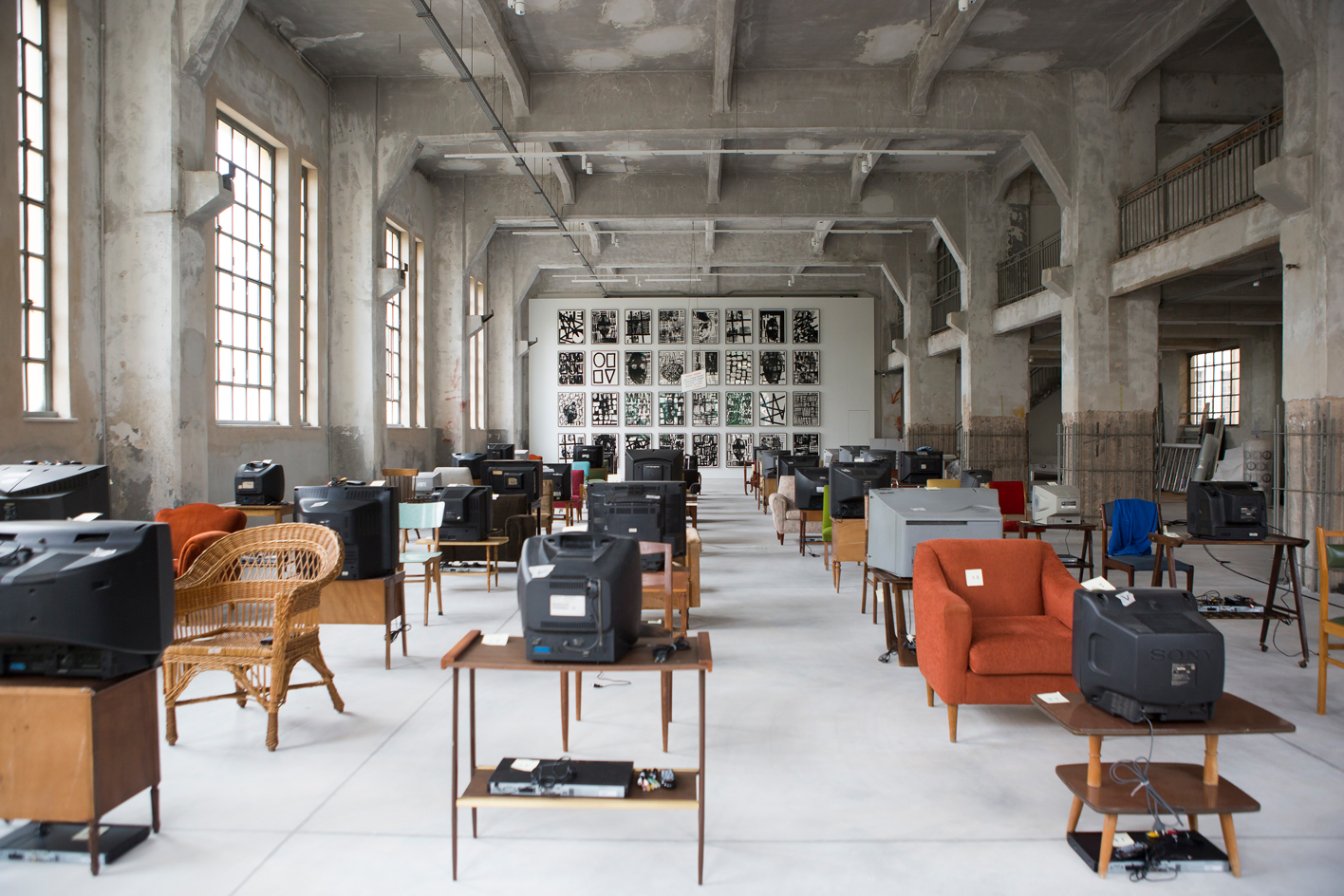
Kutluğ Ataman, Küba, 2004, 40 channel video installation with sound, 40 used chairs, 40 tables, 40 television sets, D.Daskalopoulos Collection; Adam Pendleton, Our Ideas #2, 2018, silkscreen ink on Mylar, courtesy of Yaacov Gorsd Collection, Art Consultancy Idit Orni. Installation View 'Portals', Hellenic Parliament + NEON at the former Public Tobacco Factory, courtesy NEON
According to Roy, ‘we can choose to walk through it, dragging the carcasses of our prejudice and hatred, our avarice, our data banks and dead ideas, our dead rivers and smoky skies behind us. Or we can walk through lightly, with little luggage, ready to imagine another world.’
Here, each artist is dissecting the pluralism of ideas, our cultural understanding of history and politics, the role of public space and our communal past, present and future. ‘The consequences of the pandemic – psychological, physical, social, economic and political – have not yet been fully quantified,’ says Kountouri. ‘The exhibition intends to point out how this specific moment in time is leading us to a portal. The connection is the passage, a gateway. Once we pass through to the other side, we will need to reconfirm, for the wellbeing of future generations, our commitment to certain principles: the rule of law, human rights and democracy.’
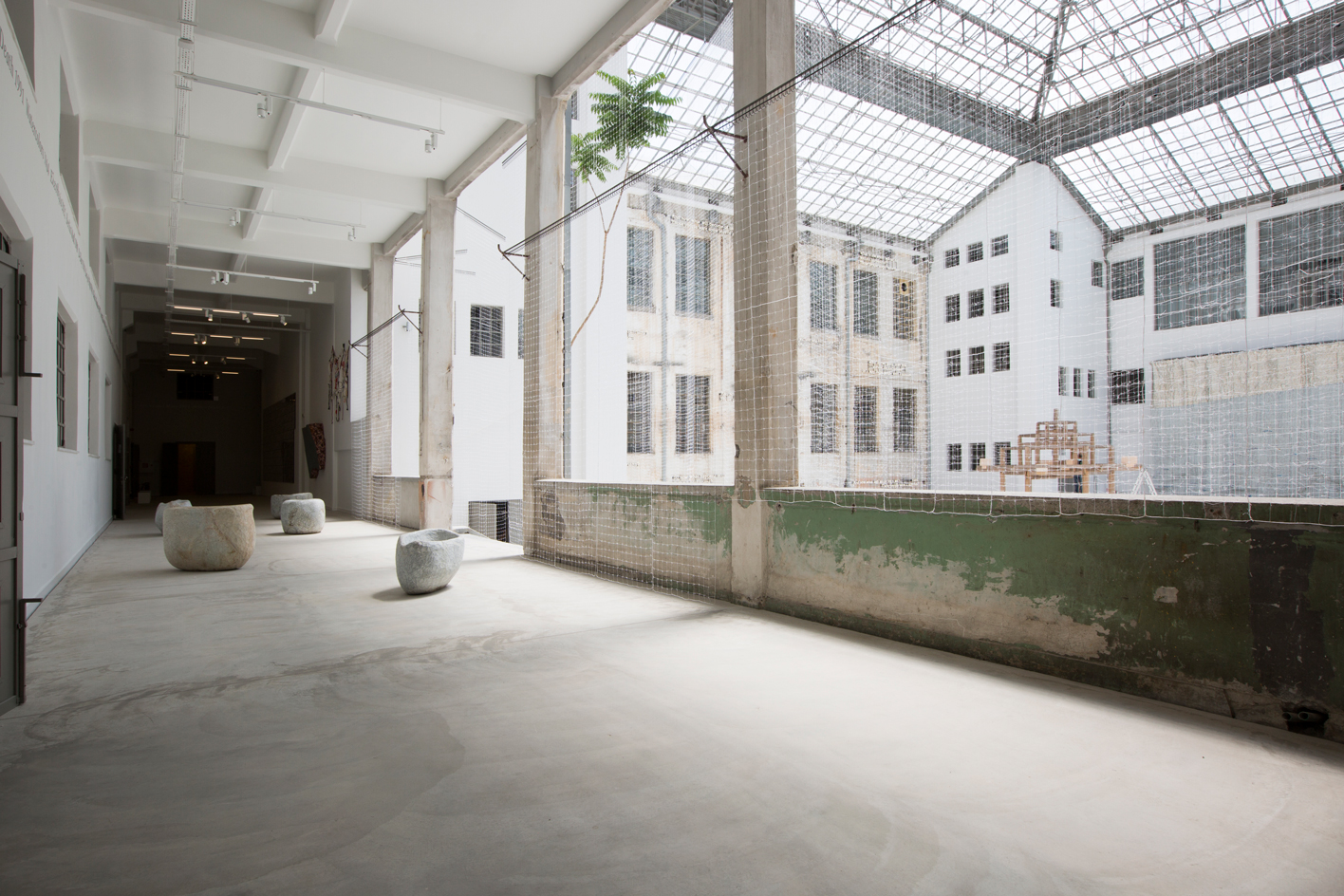
(From left) Solange Pessoa, Untitled, 2013, soapstone. Courtesy the artist and Mendes Wood DM São Paulo, New York, Brussels; Maria Loizidou, A Monumental Lightness, 2021, cotton, linen, silk threads and metal. Courtesy the artist and Kalfayan Galleries, Athens – Thessaloniki. Commissioned by NEON. Installation View Portals, Hellenic Parliament NEON at the former Public Tobacco Factory, courtesy NEON
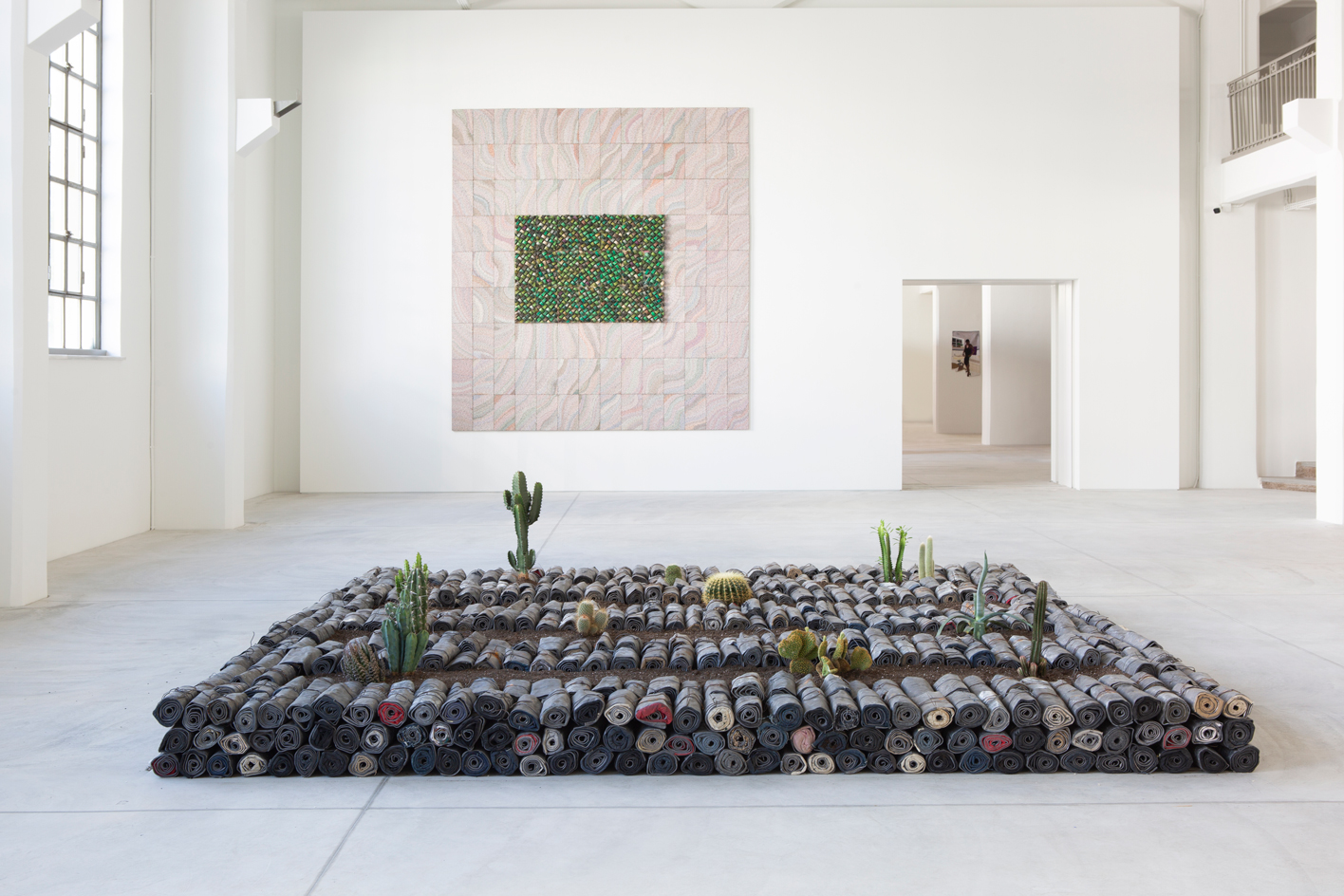
Jannis Kounellis, Untitled, 2005, lead, clothes, earth, cacti. Private Collection Rome, Italy; Elias Sime, TIGHTROPE: ECHO!?, 2020, reclaimed electrical wire and components. Courtesy the artist and James Cohan, New York. Installation View Portals, Hellenic Parliament + NEON at the former Public Tobacco Factory, courtesy NEON
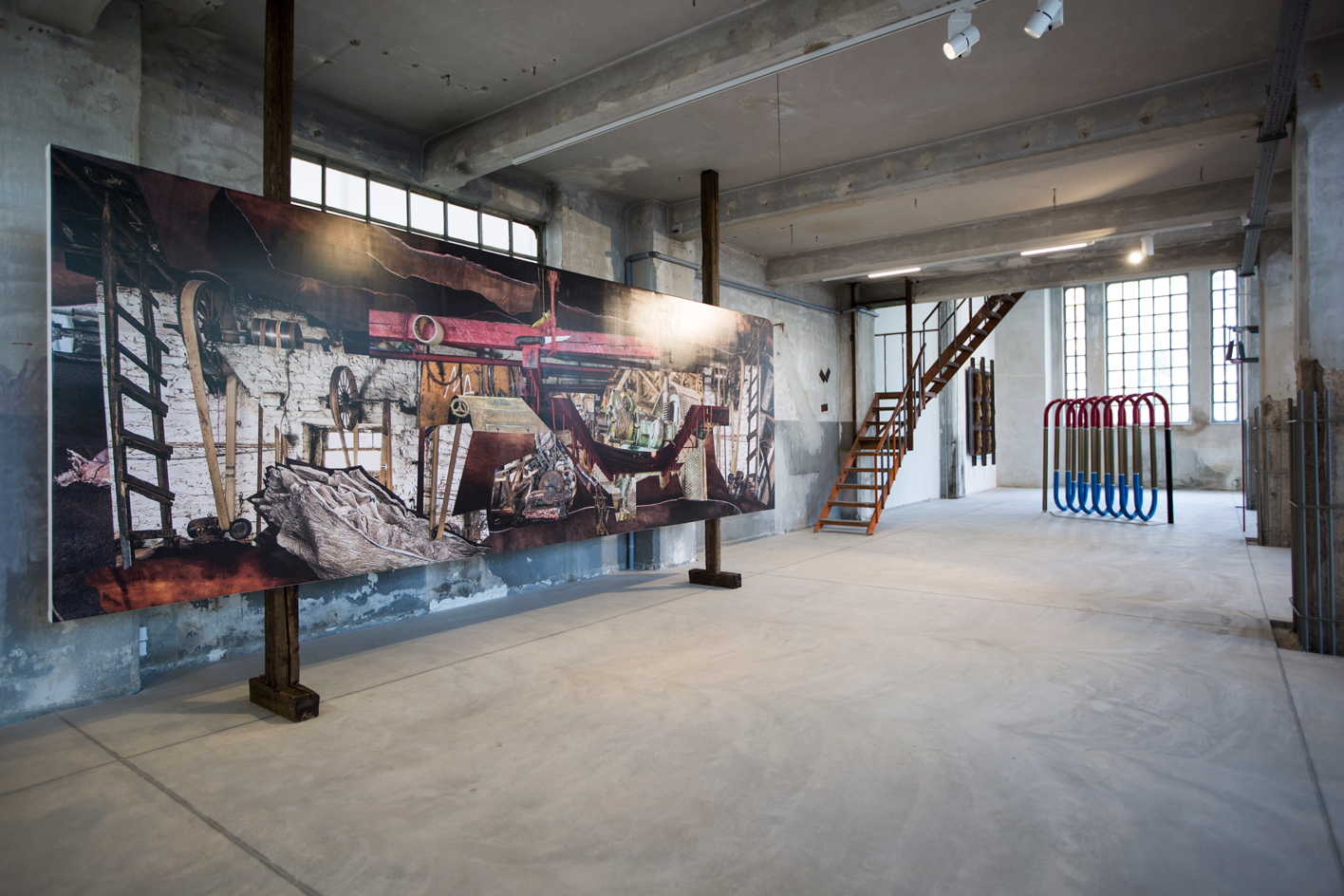
Maria Papadimitriou, My Soul My Beast (Portable Monument of Animality), 2016, mixed media Edition 2021. Courtesy the artist, NEON; Anastasia Douka, Anger organizes, 2021, anodised aluminium, car spray paint, polyethylene. Courtesy the artist. Commissioned by NEON. Installation View Portals, Hellenic Parliament + NEON at the former Public Tobacco Factory, courtesy NEON







INFORMATION
Receive our daily digest of inspiration, escapism and design stories from around the world direct to your inbox.
‘Portals’, until 31 December 2021, former Public Tobacco Factory – Hellenic Parliament Library and Printing House, Athens, neon.org.gr
ADDRESS
218 Lenorman St.
104 43, Athens
Harriet Lloyd-Smith was the Arts Editor of Wallpaper*, responsible for the art pages across digital and print, including profiles, exhibition reviews, and contemporary art collaborations. She started at Wallpaper* in 2017 and has written for leading contemporary art publications, auction houses and arts charities, and lectured on review writing and art journalism. When she’s not writing about art, she’s making her own.
-
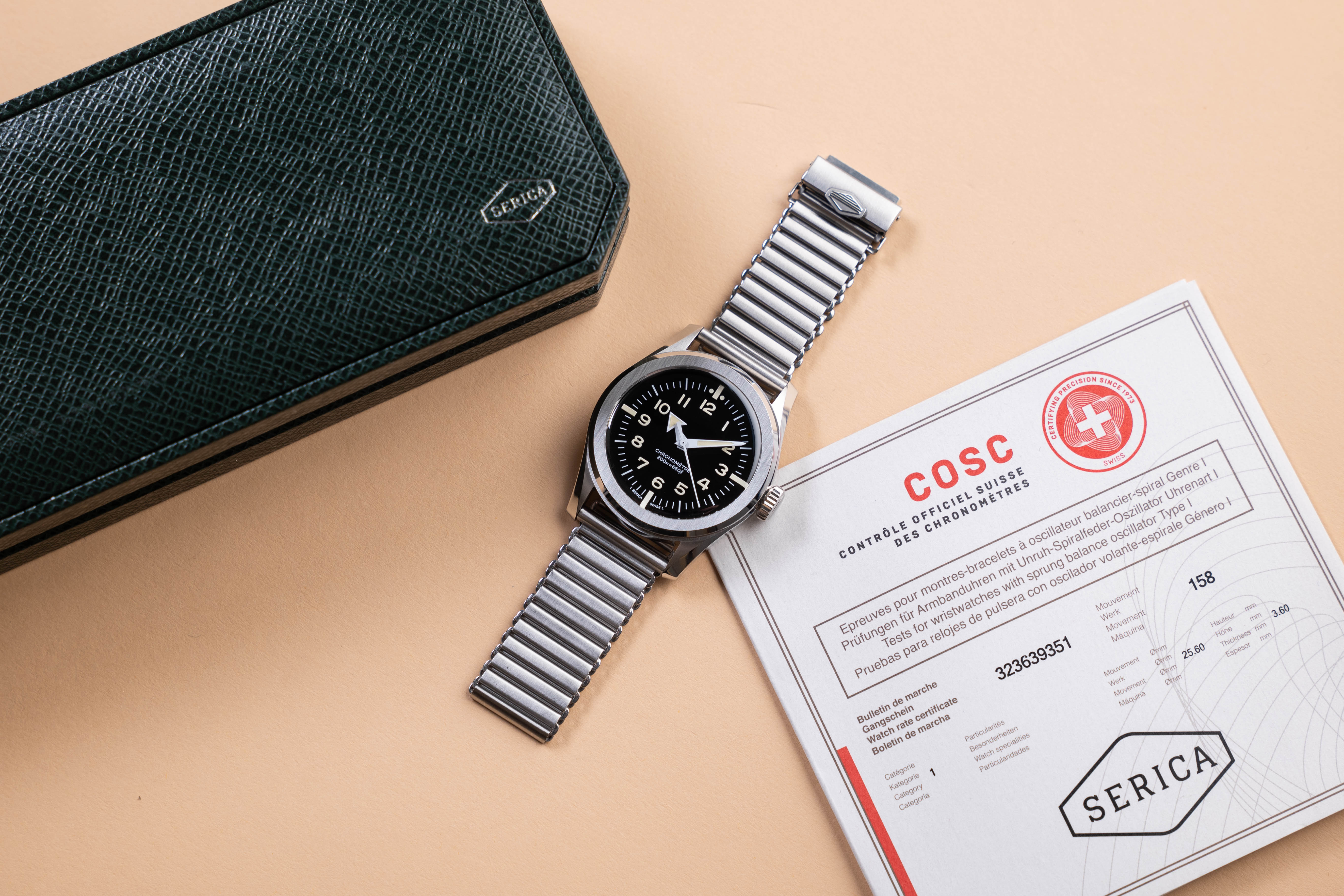 Click to buy: how will we buy watches in 2026?
Click to buy: how will we buy watches in 2026?Time was when a watch was bought only in a shop - the trying on was all part of the 'white glove' sales experience. But can the watch industry really put off the digital world any longer?
-
 Don't miss these art exhibitions to see in January
Don't miss these art exhibitions to see in JanuaryStart the year with an inspiring dose of culture - here are the best things to see in January
-
 Unmissable fashion exhibitions to add to your calendar in 2026
Unmissable fashion exhibitions to add to your calendar in 2026From a trip back to the 1990s at Tate Britain to retrospectives on Schiaparelli, Madame Grès and Vivienne Westwood, 2026 looks set to continue the renaissance of the fashion exhibition
-
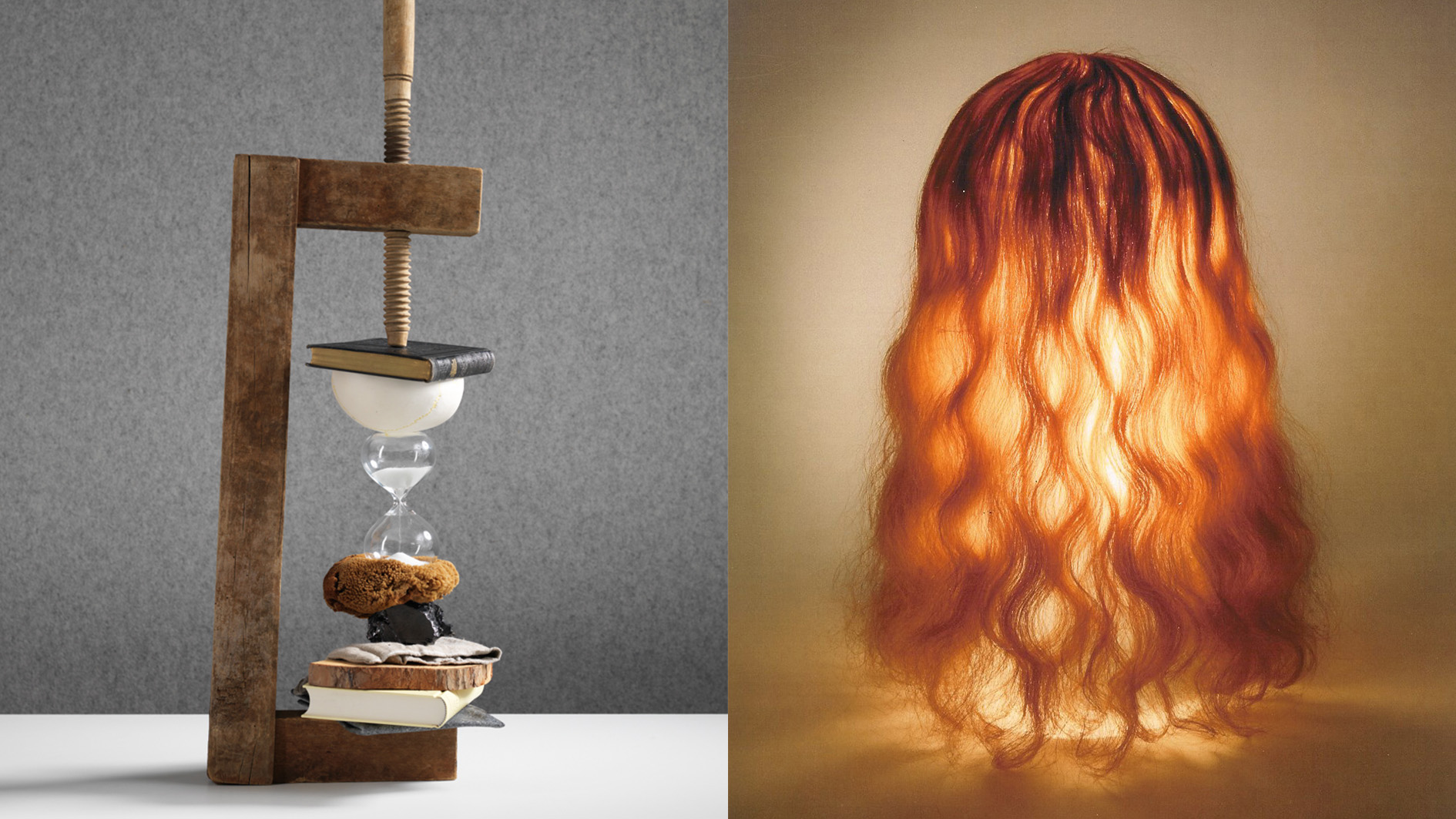 Rolf Sachs’ largest exhibition to date, ‘Be-rühren’, is a playful study of touch
Rolf Sachs’ largest exhibition to date, ‘Be-rühren’, is a playful study of touchA collection of over 150 of Rolf Sachs’ works speaks to his preoccupation with transforming everyday objects to create art that is sensory – both emotionally and physically
-
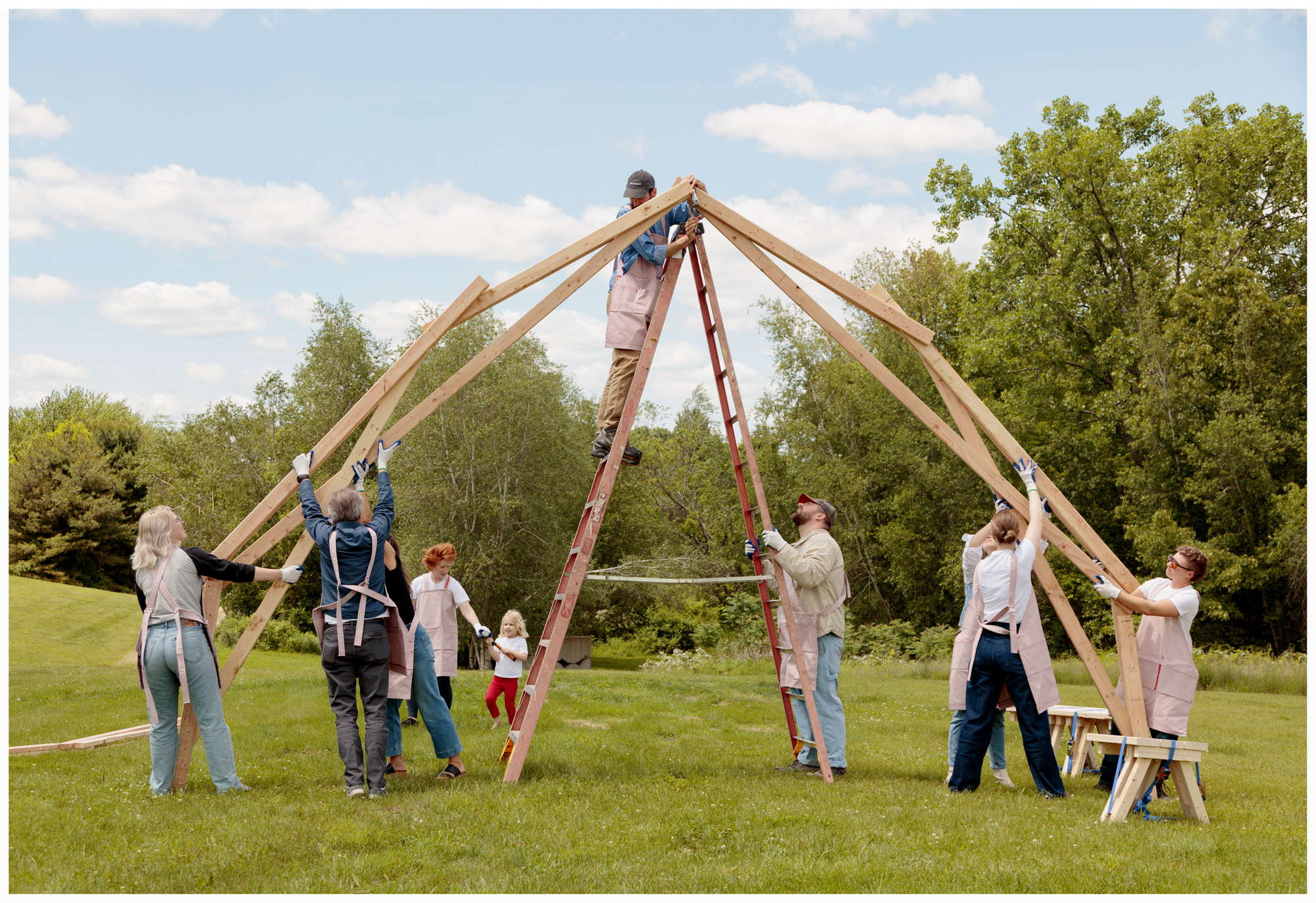 Architect Erin Besler is reframing the American tradition of barn raising
Architect Erin Besler is reframing the American tradition of barn raisingAt Art Omi sculpture and architecture park, NY, Besler turns barn raising into an inclusive project that challenges conventional notions of architecture
-
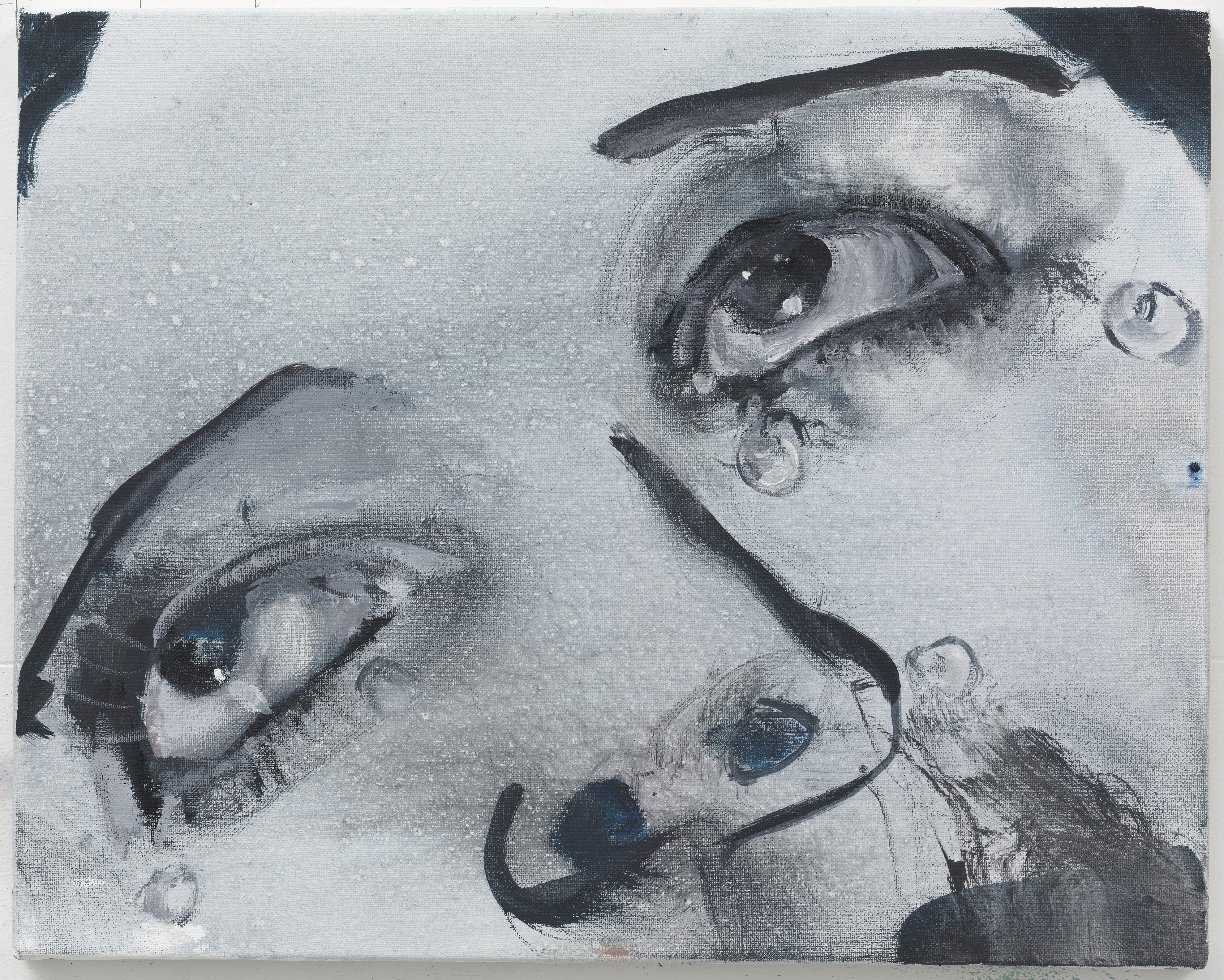 Marlene Dumas’ charged, exposed and intimate figures gather in Athens
Marlene Dumas’ charged, exposed and intimate figures gather in AthensThe artist’s work from 1992 until the present day goes on show at Athens’ Museum of Cycladic Art (until 2 November)
-
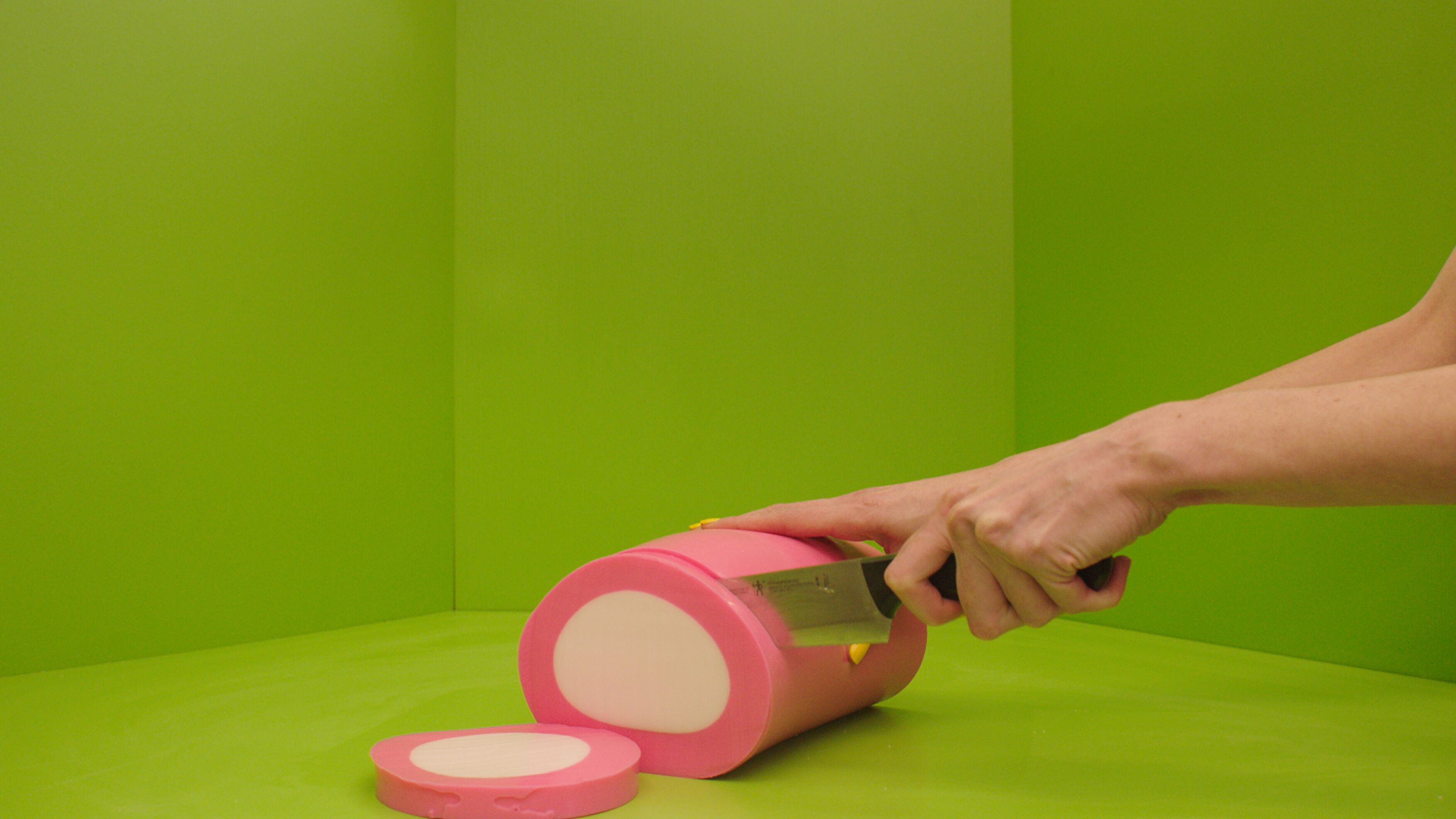 What is recycling good for, asks Mika Rottenberg at Hauser & Wirth Menorca
What is recycling good for, asks Mika Rottenberg at Hauser & Wirth MenorcaUS-based artist Mika Rottenberg rethinks the possibilities of rubbish in a colourful exhibition, spanning films, drawings and eerily anthropomorphic lamps
-
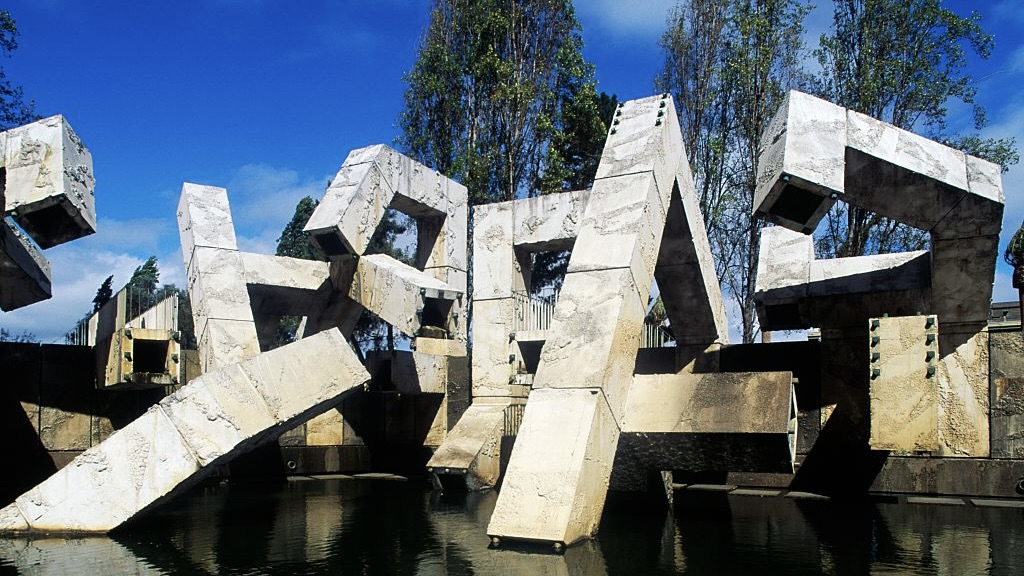 San Francisco’s controversial monument, the Vaillancourt Fountain, could be facing demolition
San Francisco’s controversial monument, the Vaillancourt Fountain, could be facing demolitionThe brutalist fountain is conspicuously absent from renders showing a redeveloped Embarcadero Plaza and people are unhappy about it, including the structure’s 95-year-old designer
-
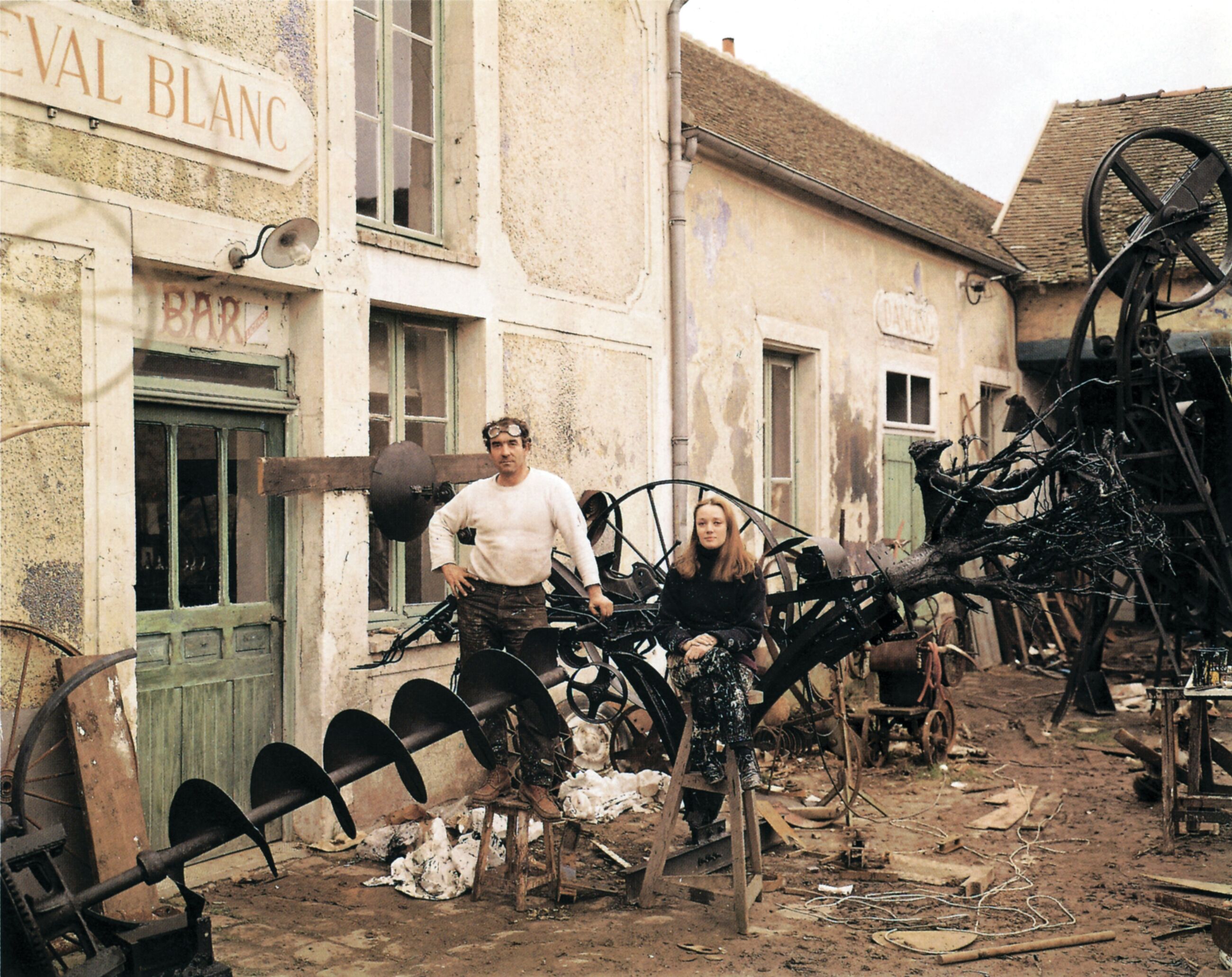 See the fruits of Niki de Saint Phalle and Jean Tinguely's creative and romantic union at Hauser & Wirth Somerset
See the fruits of Niki de Saint Phalle and Jean Tinguely's creative and romantic union at Hauser & Wirth SomersetAn intimate exhibition at Hauser & Wirth Somerset explores three decades of a creative partnership
-
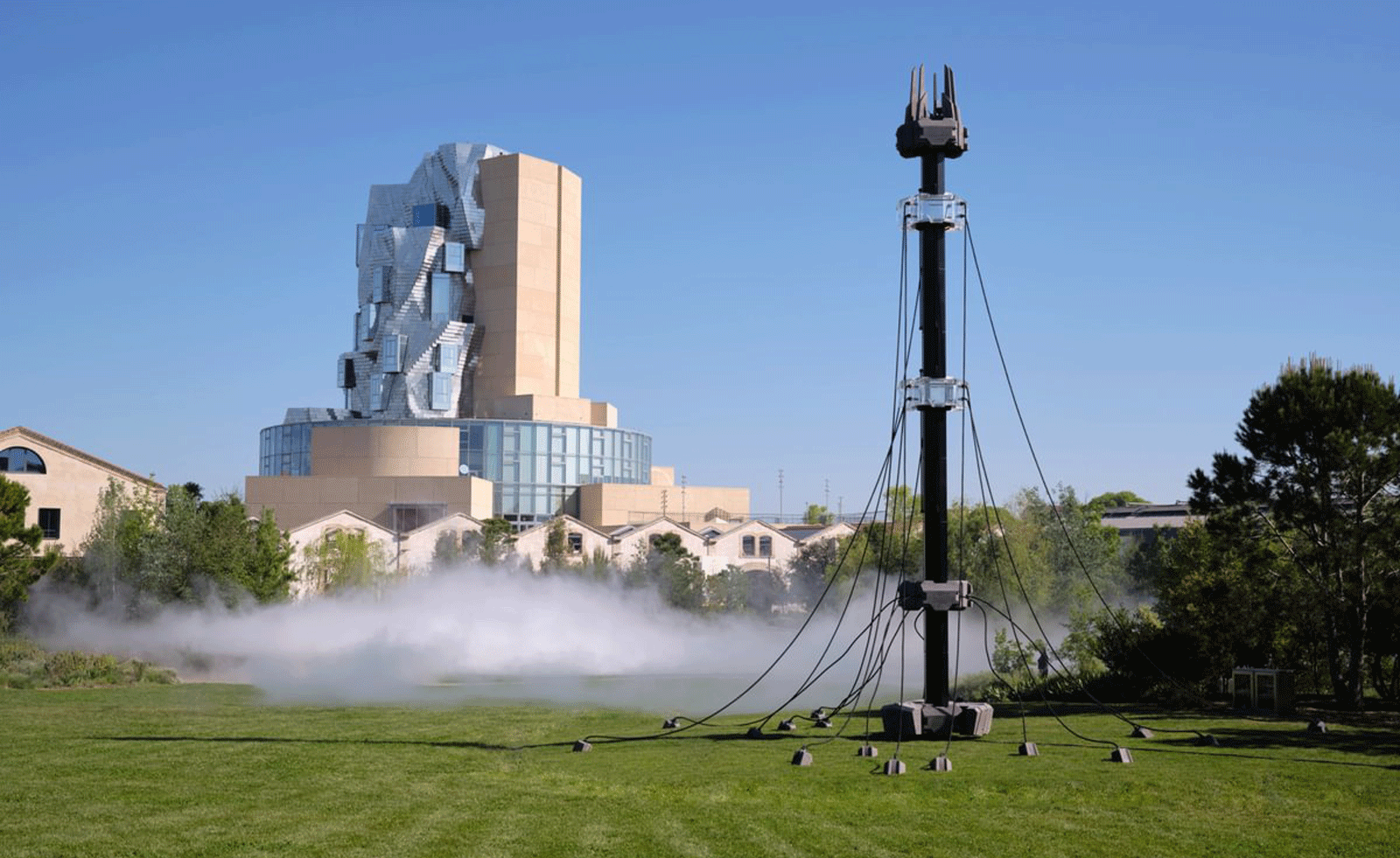 Technology, art and sculptures of fog: LUMA Arles kicks off the 2025/26 season
Technology, art and sculptures of fog: LUMA Arles kicks off the 2025/26 seasonThree different exhibitions at LUMA Arles, in France, delve into history in a celebration of all mediums; Amy Serafin went to explore
-
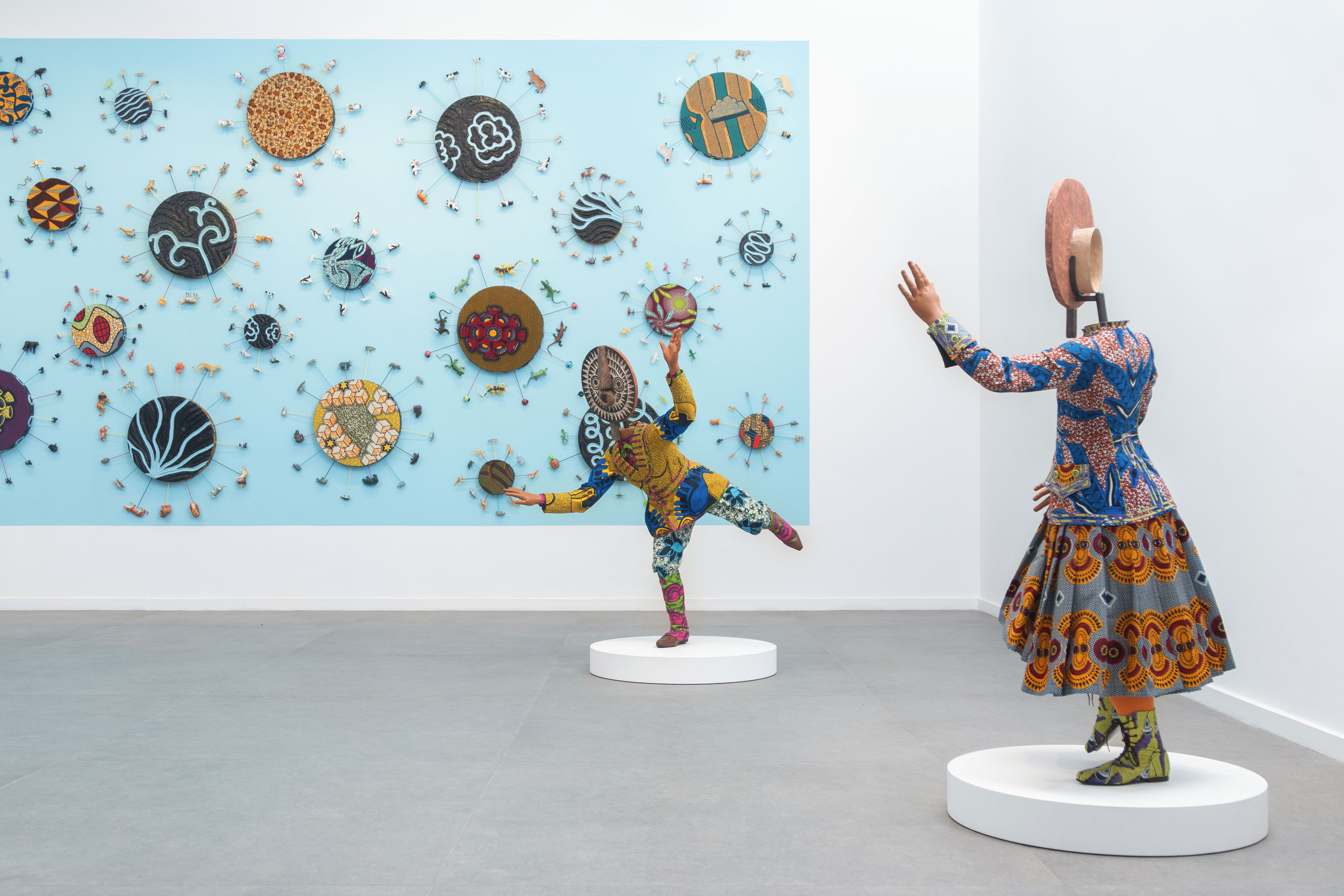 Inside Yinka Shonibare's first major show in Africa
Inside Yinka Shonibare's first major show in AfricaBritish-Nigerian artist Yinka Shonibare is showing 15 years of work, from quilts to sculptures, at Fondation H in Madagascar